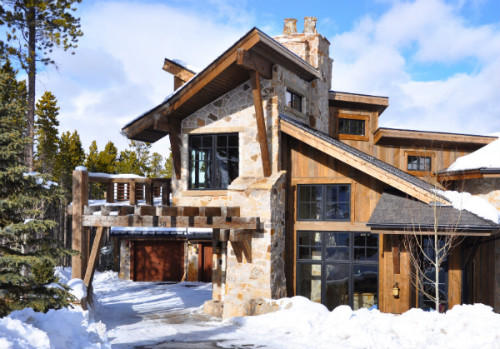Aluminum Cube Jigger, RISD Works, 20 North Main St., Providence
Cocktails are having a moment.
Many restaurants and bars are crafting drinks with fresh and out-of-the-ordinary ingredients; they’re a recurring character on TV shows like “Mad Men;” and the cocktail’s influence on fashion and design is the focus of a new exhibit at the RISD Museum.
Making and serving drinks at home is also a big part of the tradition, whether you sip them solo after a long work day or with the whole neighborhood at a cocktail party.
It’s not difficult to create high quality cocktails in the comfort of your own kitchen or living room, but investing in the proper ingredients, tools and glassware makes it a lot easier. Here’s a guide to everything you need (plus some extras you might want) to create a home bar.
INGREDIENTS
The possibilities are limitless, but you’ll want to have certain basics on hand, says Eric Taylor, general manager of Bottles liquor store in Providence.
To get started stocking a home bar, pick up one bottle each of vodka, gin, dark rum, light rum, tequila and two different types of whiskey, he recommends. Mid-priced brands are fine, he adds, saying it’s not necessary to spend a lot of money on premium spirits.
“I think a bottle in the mid-teens is perfectly acceptable, especially if you’re going to be mixing it,” he says.
If you want to make classic cocktails such as the Old Fashioned or Sazerac, you’ll also need bitters.
“Bitters are the salt and pepper of cocktails,” Taylor says. “A little goes a long way. They come in a rainbow of flavors, from orange to celery to rhubarb, and add depth and complexity.”
Jesse Hedberg, a bartender at Providence restaurant Cook & Brown Public House, says every home bar should have three types of bitters: Angostura, Peychaud’s and another flavor such as orange.
From there, depending on what you want to make, you can get creative with add-ons such as liqueurs — think St. Germain, Amaretto, Triple Sec — and fortified wines including vermouth and sherry.
Fresh citrus and herbs, plus sweeteners such as honey, simple syrup and agave, are also important components of high-quality cocktails.
“Seasonal, fresh ingredients are almost every bartender’s secret,” says Bottles owner Gil MacLean.
In the spring and summer, they might be available right in your backyard.
“Go out and pick stuff from your garden,” Taylor says. “Basil, rosemary, lavender, the possibilities are endless. I grow chamomile and have made a chamomile cocktail.”
While there are many stylish ways to display bottles, including carts, cabinets and built-in bars, it’s not necessary to store spirits in any particular conditions, Taylor says. Just be sure to keep caps sealed tight.
“One of the nice things about spirits is they don’t go bad,” Taylor says. “A bottle of whiskey or gin will last indefinitely. You can use a little bit of it, set it aside and come back to it whenever you want. You can build your library of ingredients over time. ”
TOOLS
Start by investing in a shaker, cocktail spoon and a jigger for measuring, MacLean recommends.
The Cobbler Shaker, with a metal base and a cap with a built in strainer, is the type most commonly found in home and department stores.
Hedberg prefers the Boston Shaker, a two-piece tool consisting of a pint glass and metal bottom that fit into each other. The glass part can also function as a container for stirring drinks that do not require shaking, he said.
Boston Shaker users will also want to have a strainer on hand to separate ice and/or unwanted pieces of citrus or herbs from the liquid.
If you plan to use fresh herbs and citrus, a hand juicer, muddler, cutting board and pairing knife are also good to have around, MacLean says.
Ice is a key ingredient in many drinks. While not essential, an ice bucket with tongs or a scoop is nice for presentation, Hedberg says. If you want to get really fancy, there are new silicone trays that create ice cubes perfectly sized for particular drinks, he adds.
Hedberg says every home bar should also have a couple of good mixology books, such as Dale DeGroff’s “The Craft of the Cocktail” and “The Essential Cocktail.”
GLASSWARE
“Having the right glasses to serve in adds to the look and celebration of the drink,” says Evan Larson, director of the RISD Museum’s shop RISD Works and a former bar manager at Waterman Grille.
The basic glasses you’ll want to have on hand include the lowball glass, typically used for drinks served on the rocks or stronger cocktails such as Old Fashioned; the taller and thinner highball glass, suited for mixed drinks including gin and tonic; and the martini glass, a cone shaped bowl on top of a stem and flat base.
“Glassware is really important, and there’s no getting around it,” Taylor says. “But you can spend as much or as little as you want. You can go to Target and get some basic everyday glasses or go all out with nice crystal.”
Champagne coupes — small, round bowls on a stem — have recently become another popular way to serve craft cocktails, Hedberg says.
“If you want to go old school, try a coupe,” he says. “They have great visual impact and are a fun, elegant way to present a drink.”
Glass martini sets, with matching pitcher, stirrer and glasses, are another striking way to present cocktails. RISD Works is stocking a few high-end blown glass versions to tie-in with the exhibition, and antique shops such as the Rhode Island Antiques Mall in Pawtucket frequently carry vintage sets.
“A set with a pitcher is good to have because, remember, a martini is meant to be stirred, not shaken,” Larson says.
Source: projo.com jpelletier@projo.com











 Photo:
Photo: 

